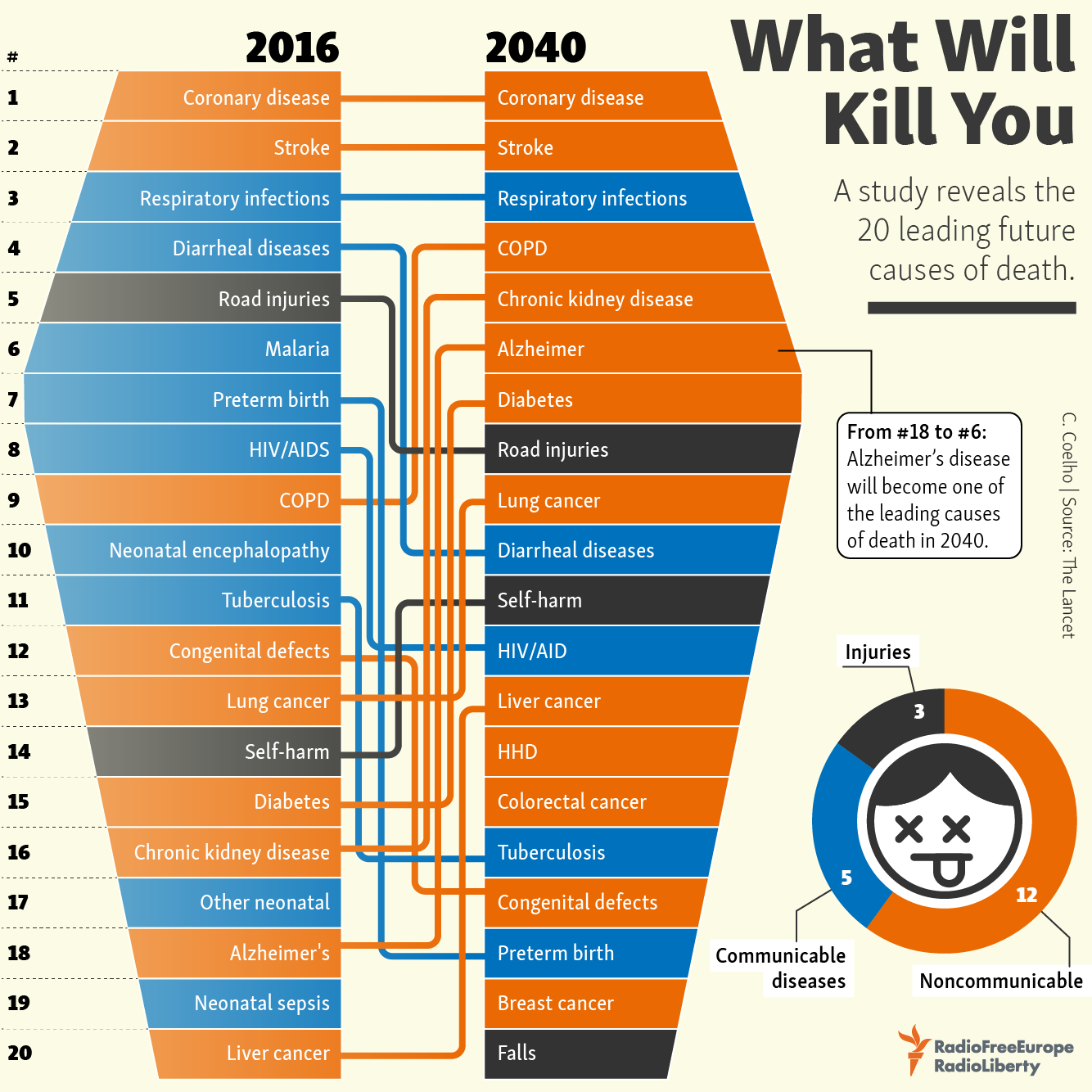A recent visualization published in The Lancet offers a glimpse into the shifting landscape of global health by comparing the most likely causes of death in 2016 with projections for 2040. Global life expectancy is projected to increase by 4.4 years for men and women by 2040, reaching 74.3 years for men and 79.7 years for women. However, reference forecasts show a 37.6% increase in total deaths by 2040, rising from 54.7 million in 2016 to 75.3 million in 2040. In 2040, it is anticipated that 12.0% of global deaths will be due to communicable, maternal, neonatal, and nutritional diseases; 81.0% to non-communicable diseases (NCDs); and 7.0% to injuries. This comparison highlights significant changes in the global burden of disease and underscores the impact of public health interventions, economic development, and changing lifestyles on population health.

Persistent Killers: Coronary Disease and Stroke
Coronary disease and stroke are predicted to remain the top causes of death in 2040, as they were in 2016. These conditions are often linked to lifestyle factors such as poor diet, physical inactivity, and smoking. Despite advancements in medical treatments and public health efforts to reduce these risks, the prevalence of these conditions is expected to persist, reflecting the ongoing challenges in addressing cardiovascular health globally.
The Rise of Non-Communicable Diseases
One of the most notable shifts is the rise of non-communicable diseases (NCDs) such as chronic obstructive pulmonary disease (COPD), chronic kidney disease, Alzheimer’s, and various cancers (lung, liver, colorectal, and breast). By 2040, COPD is projected to surpass respiratory infections as a leading cause of death, while Alzheimer’s and diabetes are expected to become more prominent. This shift can be attributed to aging populations and lifestyle changes, including increased urbanization, sedentary behaviors, and dietary changes.
The Decline of Communicable Diseases
Communicable diseases like malaria, HIV/AIDS, tuberculosis, and diarrheal diseases are expected to decline in their ranking as causes of death. This trend reflects successful global health initiatives, improved sanitation, better access to healthcare, and the widespread use of vaccines and antibiotics. For instance, advancements in HIV treatment and prevention have significantly reduced AIDS-related deaths, while ongoing efforts to combat malaria and tuberculosis have shown promising results.
Emerging Health Threats
Certain conditions are projected to become more prominent by 2040. For example, deaths from road injuries are expected to remain a significant concern, albeit at a lower ranking. Self-harm and liver cancer are also anticipated to rise in the rankings. These emerging health threats highlight the need for comprehensive strategies that address mental health, road safety, and the prevention of liver diseases, often linked to alcohol consumption and hepatitis infections.
The Impact of Aging Populations
The aging of the global population is a critical factor influencing these projections. As life expectancy increases, the prevalence of age-related diseases such as Alzheimer’s, chronic kidney disease, and various cancers is expected to rise. This demographic shift underscores the importance of adapting healthcare systems to manage chronic conditions and provide long-term care for older adults.
Curious about improving your health and wellness? These books will be invaluable.
This post may contain affiliate links. As an Amazon Associate, I earn from qualifying purchases.